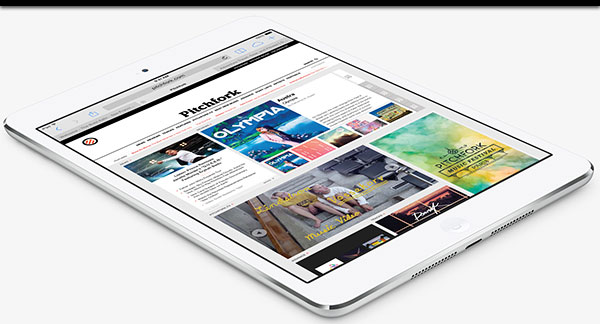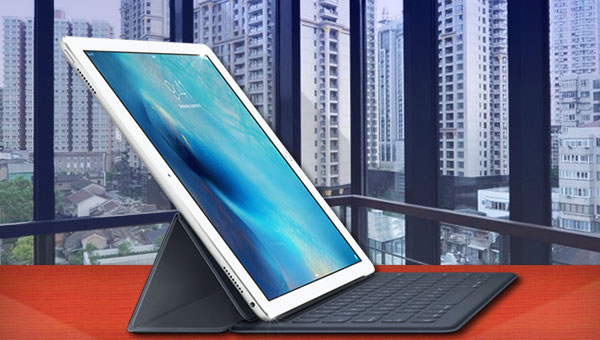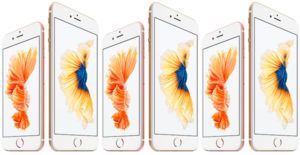My big takeaway last week, when Apple launched the iPad Pro, was this: Apple just admitted Bill Gates was right and Steve Jobs was wrong. You see, years ago Steve Jobs went on about how the early Windows tablet, which was designed for work and had a stylus, was stupid. Steve was not a fan and pretty much dissed the entire tablet idea and then again dissed the whole idea of a stylus when he launched the iPhone.
Well, Tim Cook effectively gave Jobs a royal raspberry with the iPad Pro, which is basically the Apple version of the Windows tablet. The thing is, though, that given the iPod evolved into a small tablet, the iPhone is basically a small tablet with phone capability, and the iPad — well it is the quintessential tablet — Apple has been throwing Jobs’ initial position, that tablets were stupid, into the dumpster for some time now.
The thing is, in developing the initial Windows tablet, Microsoft simply didn’t get what users wanted in a tablet very well. Apple’s success was based on better user focus, but Microsoft’s success with Surface Pro indicated there was an important part of the tablet opportunity that Apple was missing — and Apple just jumped on that. In the end, this could make both companies’ offerings far better over time.
I’ll have more to share about that this week and I’ll close with my product of the week: the most underappreciated product that Apple launched, the iPad mini 4.
A Brief History of the Tablet
The tablet started out in the early 1990s — long before the iPad or even the Windows tablet appeared — as something to replace paper. That was really the goal that Bill Gates was trying to achieve when he came up with the slate form of the Windows tablet — and it has been successful where firms wanted to digitize forms. You needed a stylus to fill out those forms.
Unfortunately, moving to a broad audience didn’t happen. Even Steve Jobs agreed that writing long notes and documents using your finger or a stylus was going to be a nonstarter for most folks, so after an initial spike in the early part of last decade, and again after the launch of the iPad, people went back using mostly laptops for long work.
What Jobs brought to the table was the idea of a tablet for entertainment, and that worked impressively well. While it actually was basically a big iPod, the iPad captured the imaginations of many. Still, it had issues moving from entertainment to work, until certain apps came onto the platform. Those apps allowed it to replace paper for forms in healthcare, aviation, insurance and hospitality. The more the iPad moved into business, however, the more the lack of a stylus hurt.
Microsoft came out with Surface to address that opportunity, and it sold rather well — even though it lacked a fraction of the entertainment apps both iOS and Android enjoyed. The iPad fell into decline, and a near-panicked Apple went back to the drawing board and created the iPad Pro, which in many ways is basically Microsoft Surface Light.
That’s largely because — unlike the MacBook Air and current stable of Microsoft offerings — it doesn’t run an Intel processor. which locks it out of the massive number of legacy apps. Also, ARM doesn’t have the headroom yet for a strong virtualization or emulation offering that could run Windows and might close that gap.
There are a number of tools that allow Windows apps to run on Macs, but the processor headroom sharply limits this option on iPads. One other shortcoming that may come back to bite the iPad Pro is the lack of a trackpad. Folks used to laptops often find it faster and easier to use the trackpad than the touchscreen — not to mention it keeps the screen from getting covered with fingerprints. Apple left a trackpad off its keyboard, but I expect the aftermarket will fill that gap quickly.
Ideally, Apple needed a product that was more like a Mac, but could run iPad apps on a tablet platform. It didn’t release that opting for a big iPad instead might have opened the door for Surface Pro 4 running Windows 10, which potentially has far better support for both Android and iOS apps collectively than either Apple or Google individually does.
Surface Pro 4
This is where I think things get interesting, because we first saw Apple sign up IBM, and then Cisco, for this opportunity. Then we saw Microsoft get Accenture and Dell to counter with a number of other vendors ready and willing to sign up.
Microsoft knew that the iPad Pro was coming. Much like it was designed to show well against the Surface Pro 3, the Surface Pro 4 is designed to sell well against the iPad Pro. So expect improvements in Surface Pro’s keyboard, screen, battery life and appearance, as Microsoft responds to this iPad threat.
Competition Is Good
This should set up a tit-for-tat competition between Apple and Microsoft for this class of product, which should improve both products at an impressive rate. Until Apple entered the pro tablet market, the likelihood that any of us were going to move to a tablet from our PCs was relatively low. Microsoft was too focused on IT, and Apple too focused on entertainment.
However, with IBM, Cisco and Accenture in the mix — not to mention Dell — and Apple entering the segment, the dual focus of IT and the user will become a competitive dynamic. In other words, regardless of the , both Apple and Microsoft will increasingly agree on one thing — and that is that you need to live off your tablet.
If both companies continue to improve at the expected blistering pace, those massive combined resources should have a much larger number of us off laptops and onto pro-level tablets from both vendors by the end of the decade.
Wrapping Up
The important part of this isn’t the iPad Pro or Surface Pro — it is that the competition between the two products and aggregate partners should result in massive improvements in both offerings that laptops likely won’t be able to match.
The end result should be far better products far more quickly, and that will increase the probability that we’ll all be on one of these things by decade’s end. With tablet-like battery life and weight coupled with laptop-like capability, I don’t see that as a bad thing — not a bad thing at all.
Oh, and on the Bill is right and Jobs is wrong thing. Bill had the concept right, but Apple got the execution right first and made more money. Nadella, Microsoft’s new CEO, and Cook, Apple’s new CEO, now get to show which one of them is smarter — and that makes this really interesting.
One of the things you learn pretty quickly about all of the Apple “i” products is that they are all variations of the iPod. The iPhone is an iPod with phone capability; the iPad is a big iPod; and the iPad Pro is an even bigger iPod. If Apple had introduced the rumored iTV, it would have been a humongous iPad.
What makes the iPad mini 4 attractive is that if you don’t really want an iPhone but want access to all of the apps, the iPad mini is a nice alternative. You then can carry whatever other phone you like and have a pretty decent blend of both the Apple phone platform and whatever else you prefer (I’m on a Windows Phone or BlackBerry depending on the month).

The refresh of the iPad mini gave it capabilities similar to the latest iPad. The price, for an Apple product, is relatively reasonable — and you end up with a better (bigger) screen than you get on the iPhone 6s Plus.
A loaded iPhone 6s Plus, unlocked, will set you back around US$900, and the iPad mini with 64 GB of memory is about half that — and therefore a deal. You get a nice cross between a tablet and an iPod that is portable, and it won’t break the bank. In effect, I think the best Apple deal right now is the iPad mini 4. That’s good enough to make the iPad mini 4 my product of the week. (Oh, and Steve Jobs was wrong about the iPad Mini too).


























































Calling the Surface a success is a bit of a stretch. As for Cook giving Jobs a raspberry, I’d have to say Mr. Cook is following Mr. Jobs playbook to a T. Jobs never had a problem telling you something was bad, unless and/or until he decided it was not bad.